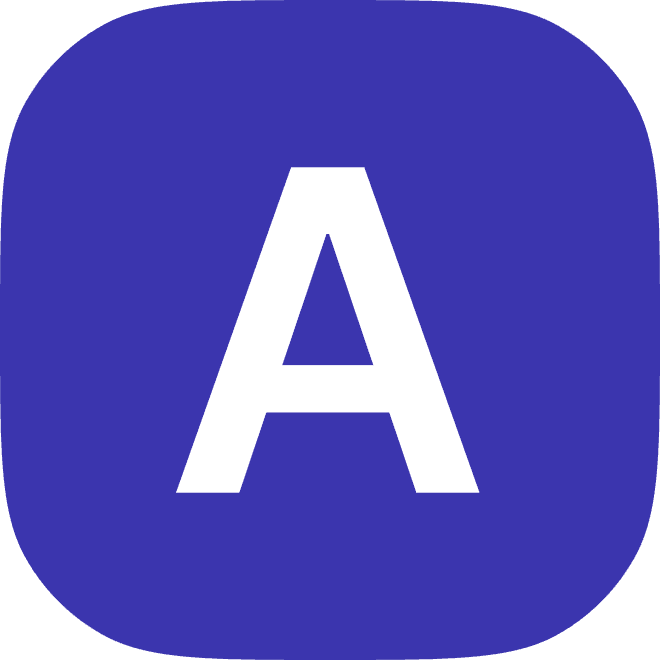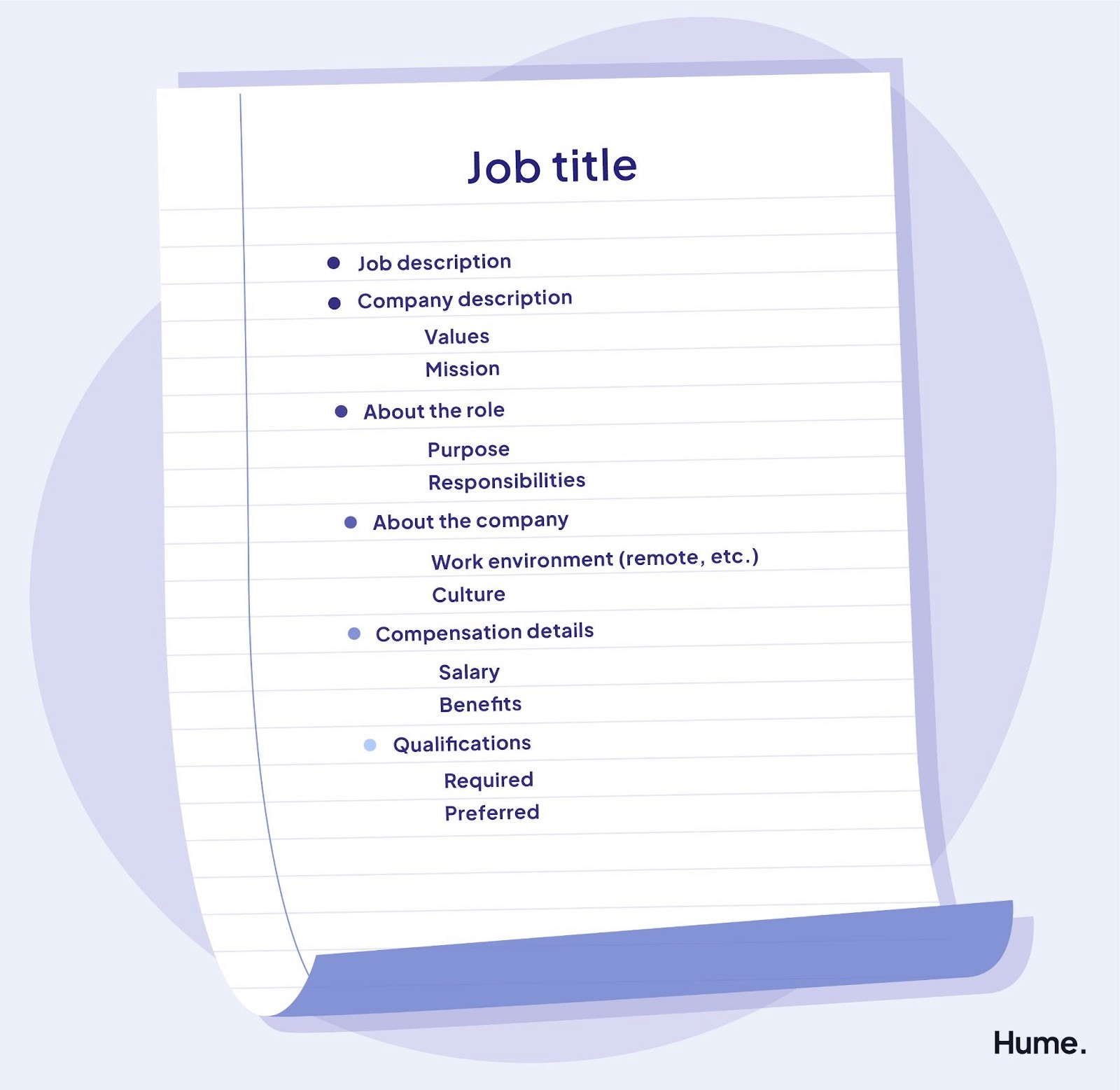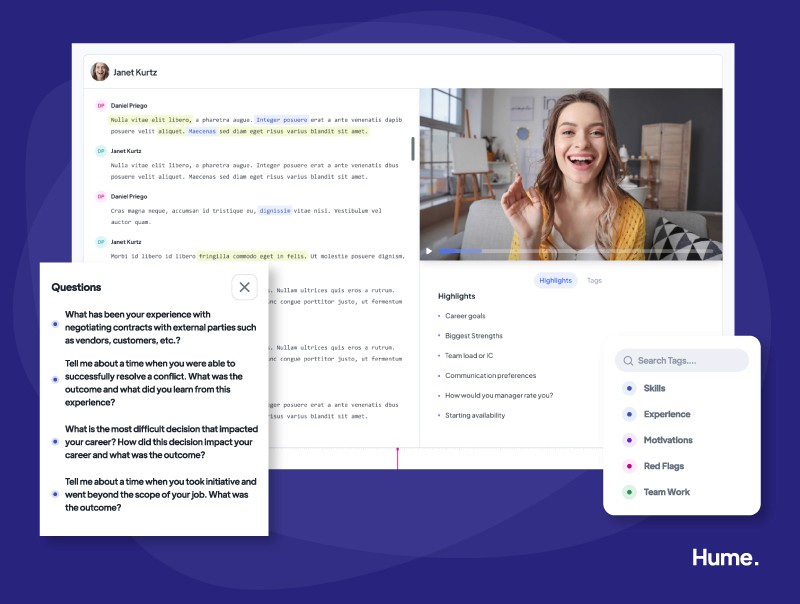14 Hiring Pros Tell Us Their Secrets To Writing Winning Job Descriptions

2023
One of the joys of working in the hiring space is that you get to apply both your artistic side as well as your scientific side. And nowhere is this more obvious than in the process of creating a job description.
However, all this flexibility can actually make writing descriptions harder when you’re feeling crunched creatively or wondering what’s actually been proven to work when it comes to job descriptions.
Need some guidance?
Perfect, because we’ve put together advice from an arrangement of business leaders with hiring experience on why it’s important to have a great job description, the best layout for an effective description, actionable tips to level up a description to ensure you’re attracting top-tier talent, and more.
And as a bonus, at the end we’ll show you how to expand on a thoughtful job description with an interview companion that locks in all those awesome candidates you’ve engaged.
Why is it important to have a thoughtful job description?
Sure it may be for slightly different reasons, but the pros agree — great job descriptions are important because they’re the first line of defense in ensuring companies and candidates are on the same page. And when everyone is on the same wavelength during the recruitment and hiring process, your team saves time and your organization enjoys the benefits of a new hire who understands their role and is aligned with your company-wide goals.
“While a job opening may be an incredible opportunity and position, its description may be the difference in whether or not qualified candidates actually apply. People want to know exactly what it is that they are applying to, and companies want the best, most qualified people to apply, and only good job descriptions can allow for both of those.” — Kyle MacDonald, director of operations at Force by Mojio
“Having a well-designed job description is important for both companies and applicants, as it shortens the time and effort needed to find the right match.” — Erik Hansen, management consultant at Right People Group
“Job descriptions are important for both companies and applicants, for companies it gives a brief summary of the role, how it links to our company's goal, and a list of important responsibilities, requirements, and credentials. And for applicants, it defines what are the duties of the role they are applying for, what are the company policies, organizational structure, their compensation, etc.” — David Farkas, founder and CEO at The Upper Ranks
How to create a great job description
Understanding that job descriptions are valuable is one thing, but actually putting one down on paper is another thing altogether. In this section, some experienced hiring pros break down exactly what an effective job description looks like to them.
“With every job description you write, there is basic information that needs to be included. The job title should be clear and written in normal language. If your company enjoys using unique job titles, that's great, but for the sake of the job description, maybe translate ‘number ninja’ to accountant so the right people won't pass up your job posting.
“After the job title comes the job description — the actual description of what this job entails on a daily basis. You can also add in how this job helps move the company's mission forward. After the description of duties for this particular job, you'll want to include a list of responsibilities. Using bullet points is a recommended way to list most, if not all, of the responsibilities this job is in charge of. Next comes the requirements to be considered for this position. Things like experience, education, etc.
“At the end of your job description, you can add a more in-depth paragraph about the company's mission and what the company culture is like in order to give applicants a general idea of what they'll be joining, should they get the job, as well as compensation details. You don't need to go into complete detail of what your benefits package is here, but you do need to give applicants a general idea of the salary being offered for the position.” — Brian Donovan, CEO at TimeShatter
Our next experienced hiring pro, who has seen a lot of job descriptions in their time as the owner of a professional staffing agency, has a pretty specific layout they like to see them follow.
“I like a format that starts broad and goes into more specifics as it moves along.
“At the top should be a general description of the position, along with a sentence or two of information about the company and its mission/values. Next should be the detailed description of the job’s role, purpose, and responsibilities, followed by a description of the work environment (if it’s hybrid/remote or in-person, a brief description of the culture, etc.) and the compensation range/benefits. Finish the description with the required qualifications and preferred qualifications in a list format.
“Don’t use large blocks of text when you can avoid it. Keep paragraphs to a maximum of 2 to 3 sentences, and use bulleted or numbered lists for things like qualifications and job responsibilities. This makes the description easier to read on a variety of screens and helps the important information to stand out.
“One other tip: include the compensation range and benefits of the opportunity in the job description, especially if they’re competitive or unique. Job seekers appreciate companies that are forthright with this information, and some will even assume the pay is low if this data is omitted in the job description, which could prevent potentially strong candidates from applying.” — Michael Moran, owner and CEO at Green Lion Search Group

What’s the most important part of the job description?
Responsibilities, qualifications, experience, culture, salary — there are many different elements hiring professionals like to focus on when it comes to job descriptions. What this tells us is that you have to decide for yourself what features are most important for specific roles as well as for your organization as a whole, and create your job description to highlight those.
“In a job description, the most important elements are role, duties, and responsibilities. For any job description to be outstanding, it must have a defined role, then duties and responsibilities required to fill that role.” — Maria A. McDowell, founder at EasySearchPeople
“I would say the most important element of a job description is the qualifications and experience required for the position. This helps to ensure that candidates who apply have a good understanding of what is expected of them and know whether or not they are a good fit for the role.” — Mark Koning, chief human resources officer at Discover Business
“The most significant part of a job description is the summary objective, which lists the broad responsibilities and descriptions of major activities, the interactions with customers, coworkers, and others, and the expected results of incumbent personnel.” — Steven Walker, CEO at Spylix
“In my opinion, being clear about the culture is vital. I say in the job description, it’s high pressure and vast learning is required to keep abreast of the project daily! I want people that can understand this or have experience in this because our company isn't a school, it's a startup so I am managing expectations early on. If you can handle this, you [are] one step closer in being part of a like minded team.” — Ali Sheikh, investment director and partner at Element Star
“The most important aspect of a job description is the salary information. It used to be considered in poor taste to mention salary details but this is an antiquated idea that is being refuted by new job seekers. Money is the bottom line, and it is important to be upfront about what a candidate can expect from your position. There is nothing worse than wasting valuable time and resources interviewing and vetting candidates if you are ultimately not aligned with compensation. Save yourself the headache.” — Bill Mann, privacy expert at Restore Privacy

Pro tips to level-up your job description
Once you’ve thoughtfully crafted your job description, there are a few upgrades the hiring professionals recommend to double down on its effectiveness and engage the best fit for the role.
“Avoiding using specific gender language, such as ‘he’ or ‘she,’ is a must.” — April Maccario, founder at AskApril
“Keep it short and sweet. Long job descriptions are often daunting to look at for both the candidate and the hiring manager. It can also make the whole hiring process much more confusing and make it difficult to refer back to. Only stick to the important points to keep candidates interested.” — Jim Sullivan, CEO and founder at JCSI
“Use SEO-friendly job titles. Opt to use the keywords job seekers will be using when they search for job openings instead of fancy or overly creative job titles like ‘Marketing Wizard.’ This way, you can increase the chances of your job descriptions being found and read by candidates.” — Stacey Kane, business development lead at EasyMerchant
“If your job description reads like a list of demands, do yourself a favor and toss it out immediately. Do an in-depth job analysis of the role you’re hiring for to help you better understand the position. Then, create a SMART job description, which is this:
“Specific. Define the purpose of the job, Make it crystal clear. It should be like a mini mission statement that guides all decisions and actions the employee will be making every day.
“Measurable. What are the key performance indicators that will be used to measure someone’s success in the role?
“Activities. What will the employee be doing often? How do they lead to producing measurable results? Describe those activities and the desired results.
“Realistic. Make sure the overall goals of the position are realistic. Describe how the good performers go about achieving the outcomes they are producing.
“Time bound. Create time-bound goals. For larger company goals, you might use longer timelines, like 30, 60, and 365 days. For more specific activities, the time frame could be hourly, weekly, or monthly.” — Fletcher Wimbush, founder and CEO at The Hire Talent.
Build on great job descriptions with a smart interview companion
Job descriptions are a key tool for attracting the right kind of attention to your open roles. But what tool is it that engages the best-fitting applicants so you can fill those roles quickly and effectively?
That tool is the interview.
Here’s how to build on the great job description you’ve created with smart interview technology that helps lock in awesome candidates.

Hume is a tool for talent leaders that helps record, transcribe, tag, and summarize digital interviews — all with a boost from artificial intelligence.
With our interview intelligence platform, hiring professionals get to pay more attention to the person on the screen and less attention to their notes. But that doesn’t mean your decision making has to suffer — quite the opposite, in fact.
We like to say that Hume helps by providing replay instead of recall. Our robust interview platform gives you all the tools you need to revisit the questions you asked as well as the answers that will help identify whether or not the candidate will be a good match for the role, such as their communication preferences, their perceived strengths, past experiences, and so on.
And it’s not just the interviewer who gets access to the insights Hume helps uncover. We made it easy to create a highlight reel that can be shared with any of your colleagues on the Hume platform. Again, it’s all about removing unreliable memory and interview bias from the equation and making remote, asynchronous hiring your superpower.
Looking to build more interviewing super heroes across your team? With Hume, you can align every interviewer on the ideal terms, interview structure, question types, and other best practices that ensure every interview is productive. It’s as simple as using our playlist tool to create and share out coaching videos.
Inconsistent, opaque, and slow interviews might still be the norm in many industries, but they don’t have to be your reality. Create a data-led and bias-free interviewing process that’s fast, fair, and scalable with Hume — and finally take advantage of all those awesome leads your job descriptions are bringing in the door.
Make interviews your competitive advantage this year. Get on Hume’s waitlist for early access when our ground-breaking platform goes live to the public.
Want to stay on top of the industry-leading hiring news we’re sharing? Feel free to give Hume a follow over on LinkedIn.



